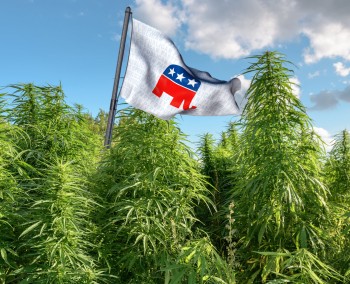
In 1970, a groundbreaking discovery unfolded within the hallowed halls of the University of Oxford as researchers delving into cannabis stumbled upon a chemical compound that was hitherto unknown to science. It wasn't the ubiquitous THC or CBD, the two most renowned compounds associated with cannabis. Instead, this newfound gem was labeled tetrahydrocannabivarin, a mouthful of a word often abbreviated THCV. Little did they know that this discovery would ignite a fifty-year-long quest for a substance that would later earn itself an aura of mystique and allure, captivating the imagination of cannabis connoisseurs worldwide.
THCV remained an enigmatic rarity for five decades, often referred to as the "sports car of weed" or, more whimsically, as "weederall" due to its reputed astonishing effects. Those fortunate enough to have experienced it claimed that THCV kept them awake while simultaneously curbing their insatiable hunger – a paradoxical twist in the world of cannabis. This resulted in adventurous cannabis enthusiasts embarking on global quests, sometimes risking their lives, in a relentless pursuit of THCV. Yet, despite their relentless efforts, they could not secure a consistent supply of this elusive compound.
But as of today, a tide of change is sweeping across the landscape of THCV accessibility. THCV is becoming increasingly available, particularly in the dynamic and ever-evolving cannabis market of California. This emergence marks a significant shift in the cannabis industry, as it opens up a whole new realm of possibilities for consumers and producers alike. With the federal legalization of hemp in 2018, the abundance of synthetic cannabinoids in America has expanded, allowing companies to access lab-made THCV in bulk. Additionally, cannabis cultivation companies have made remarkable strides in nurturing cannabis plants that are naturally rich in THCV. This triumphant convergence of factors has created a stable supply of THCV, sparking unprecedented enthusiasm among retailers and cannabis companies to introduce a diverse range of THCV-infused products to the market. As the world eagerly anticipates the impact of this unique compound, California stands at the forefront of a remarkable revolution in the cannabis industry, heralding the dawn of a new era in the world of THCV.
California's Thriving Role in THCV Availability
California, long renowned for its progressive approach to cannabis, has now taken the lead in making the elusive THCV accessible to consumers. This remarkable transformation can be attributed to two pivotal factors: the federal legalization of hemp in 2018 and the relentless innovation in the cultivation of cannabis plants. The result is a flourishing THCV market that is reshaping the way consumers experience cannabis products.
With the legal weed market in California becoming one of the most promising in the world, adults now have the opportunity to purchase a variety of THCV-infused products, ranging from mints with a matcha twist to pre-rolled joints, pills and even espresso-flavoured THCV shots. This newfound accessibility provides enthusiasts with an array of choices and reflects the state's commitment to leading the way in the ever-evolving cannabis industry.
As the demand for THCV products surges in California, this subheading delves into the factors contributing to the emergence of THCV in the state, exploring how it's transforming the cannabis landscape and the lives of those who have eagerly awaited its arrival.
Retailers' Race to Meet the THCV Craze
With THCV now within grasp in California, the cannabis industry is experiencing a seismic shift. The emergence of this elusive compound has set off a race among retailers to meet the surging demand for THCV-infused products. One might wonder what makes THCV so highly sought after and why it's generating such a buzz in the market.
Companies like Kiva, a prominent edible company, have been quick to seize the opportunity. Kiva recently introduced two THCV-infused gummy products: "Focus" and "Energy." These gummies combine THCV with THC and other energy-boosting components like B vitamins, L-theanine, and caffeine, promising consumers an exhilarating experience.
However, a major caveat remains: none of these products have undergone specific human testing or FDA clinical trials to verify their effects. The industry is thriving on the tantalizing prospects of THCV, but its actual impacts are still shrouded in mystery. This subheading examines the fervor in the cannabis market to supply THCV products, while acknowledging the need for comprehensive research and regulatory oversight to substantiate the claims surrounding this intriguing compound.
THCV's Unique Interaction and Unresolved Mysteries
THCV, often described as the enigmatic cousin of more well-known cannabis compounds, distinctively interacts with the human body, prompting questions about its potential benefits and uncertainties. While studies offer glimpses of its effects, they are far from conclusive, leaving the cannabis industry and scientific community intrigued and cautious.
Unlike its counterparts, THCV's interaction with a specific type of receptor appears to counter the typical cannabis experience. It may turn down this receptor, potentially explaining its associations with seemingly contradictory effects, such as keeping individuals awake instead of inducing sleep and reducing hunger rather than stimulating the notorious "munchies."
Studies involving THCV, albeit limited, suggest potential health benefits related to metabolism. Rodent research indicates that THCV can decrease appetite, body weight, and resting glucose levels, hinting at its potential for treating metabolic disorders like diabetes. Notably, a 2016 placebo-controlled clinical trial revealed lower fasting glucose levels in individuals with Type 2 diabetes who were administered THCV.
Yet, it is crucial to reiterate that these promising studies do not offer definitive proof of THCV's effects on humans. The sample sizes remain small, and human testing is limited. This subheading delves into the tantalizing possibilities offered by THCV, the cautious optimism in the cannabis industry, and the critical need for more comprehensive research to unlock its true potential.
Bottom Line
The emergence of THCV in California signifies a monumental shift in the cannabis landscape, where an elusive compound discovered five decades ago is now becoming increasingly accessible to consumers. California's progressive approach, coupled with federal hemp legalization and advancements in cannabis cultivation, has paved the way for THCV to take center stage in the cannabis market. However, THCV's excitement is tempered by the lack of comprehensive human testing and clinical trials, leaving its true effects shrouded in mystery. Nonetheless, the availability of THCV-infused products in California heralds a new chapter in the world of cannabis, promising to unlock the potential of this unique compound and redefine the industry's landscape in the years to come.







